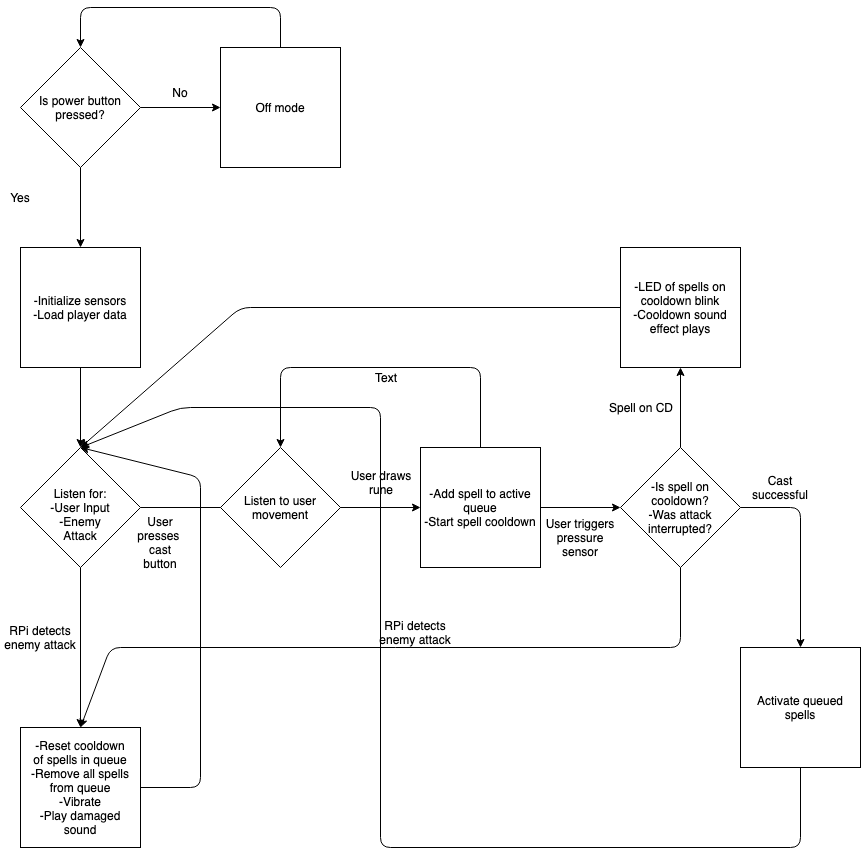This week, we ordered a few more pieces of hardware that we need: our display screen, a GPIO extender (20 pins to 40 pins), and NRFL01 communication chips.
On the software side, we have been parallelizing the code we have, writing code for operating our speaker, debugging the IMU classifier module (the RPi connection with the IMU has a number of issues that we are currently working out), and filling out more details in our player class.
On the hardware side, we have most of the circuit read, and are prepping for integration (and the next time all of our components will be in the same place). Next week we will finish up our physical circuit and make sure our code (and all of those sensors) work.

